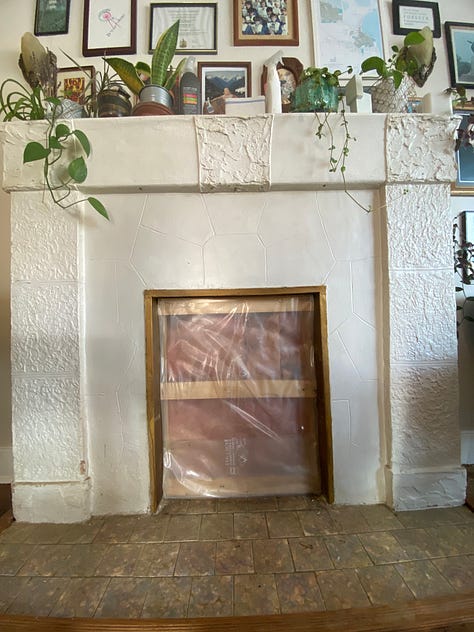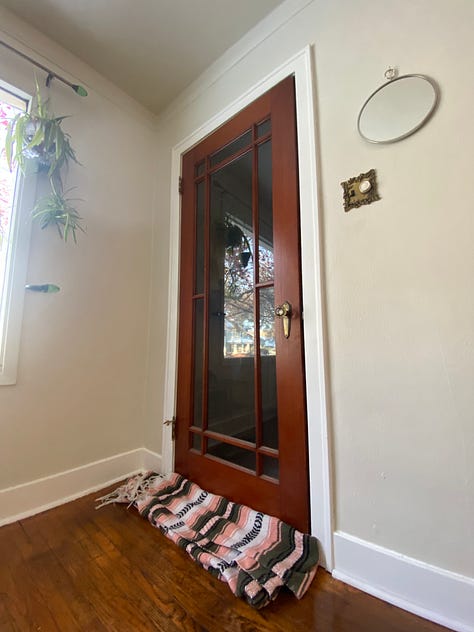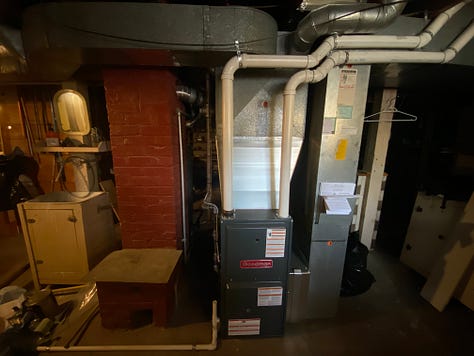


Whether you’re new to the neighbourhood or have lived here for decades, winter brings the same woes regarding utility bills. However, older apartments and character homes face unique challenges when it comes to keeping costs down.
Northern Edmonton saw explosive growth throughout the 1930s and 1940s. In fact, during the year the house I’m sitting in was built, Edmonton's population climbed by 3 per cent. If you look at the whole decade, the increase jumps to nearly 20 per cent! With new Edmontonians came new homes, though not all were built equally.
According to a 1941 census, 60 per cent of Canadian dwellings relied on inefficient heating (stoves or space heaters), and 93 per cent used coal, coke, or wood as their heating fuel. As technology and household income improved, so did comfort — in the early 1980s, under 7 per cent of Canadian homes now relied on stoves or space heaters and under 5 per cent used coal, coke, or wood as their heating fuel.
If your home was built somewhere between those years, your heating bill may be higher thanks to the original construction. Add the various renovations, upgrades, and retrofits completed over the years (especially the ones you don’t know about), and you may begin to see why your utility bills look different from those of our neighbours in newer homes.
Luckily, many low-cost options for home insulation are renter-friendly and do not require many tools. For instance, a DIY shrink-and-seal film kit costs less than $20 and requires only a few minutes to install with a hair dryer. Shrink-wrapping older windows, especially those with only a single pane, will help trap heat while making it harder for cool air to transfer through them and into your home.
You can also use something as simple as curtains to improve your quality of life. Opening curtains during the day and closing them at night will ensure sunlight warms your home while preventing that warm air from leaving during the night. Doubling up on curtains (even mismatching ones!) can make a more significant difference, all while giving your place a cozier look. Blankets or bubble wrap will do in a pinch.
If your home has exposed stone or brick such as a fireplace or accent wall, ensuring that sunlight hits these dense surfaces means they will radiate heat for the rest of the day. While we’re on the topic of fireplaces, ensure your unused chimneys are plugged with insulation and that any cover provides adequate insulation.
Other low-cost options involve your overall HVAC efficiency. Replacing old filters can improve airflow from your furnace, and patching any holes in the ductwork with a bit of tape can ensure heat reaches where you need it. Area rugs or carpets to reduce heat loss through floors can make rooms feel warmer too.
There are also free options for reducing heating bills. Closing the door to rooms you rarely use and covering the air vents in those rooms will concentrate heat on areas you use most frequently. For extra insulation, you can hang old blankets or quilts over the unused doorways to prevent cold from leeching in. Draft stoppers under your exterior doors (like a rolled-up towel) will likewise prevent cold air drafts.
Taking steps to feel warmer around the house may not result in lower bills, but it will mean being comfortable. Moving furniture away from outside walls and closer to your heat source will make your downtime more comfortable, as will throwing on an extra layer around the house.
Lastly, some readers may be eligible for the Home Upgrades Program to help cover utility and upgrade costs. Visit the HUP website for more details, and check out Energy Champion for personalized Albertan utility and rebate advice.





Like many in the neighbourhood, being a first-time homeowner came with a considerable learning curve. I hope to share more of what I've learned from renovations in the future!
Thank you Jacob Ulickij for another useful and readable article!